Lime tree losing leaves after scale infestation and clean up
Laura O (8a Dallas)
5 years ago
Featured Answer
Sort by:Oldest
Comments (56)
jaydub83
5 years agoken_adrian Adrian MI cold Z5
5 years agoRelated Discussions
Key Lime Losing Leaves
Comments (10)Hi, Linda - what is meant by "I have added stones so I am thinking the roots not showing is the problem, I scooped out excess dirt, hopefully this is the cure"? Something is amiss, but with more info from you, we can probably figure out what it is. Adding "stones" to the bottom of a pot might or might not be a bad idea. If the grow medium you're using supports a layer of 100% saturated soil that defies gravity by refusing to exit the pot (a perched water column/ table), stones used as ballast can be your plant's best friend, because the stones displace a volume of medium which would otherwise be saturated with water; however, stones used as a drainage layer serve only to elevate the perched water table's position in the pot. These pots are full of grow medium and the shaded part represents a perched water table (PWT). The maximum ht of the PWT in any given medium that supports PW is a constant, no matter the size or shape of the pot. In the case above, the PWT is 3" tall, and you can see it remains so in all 3 pots. In the middle pot, the water "perches" (like a bird on a wire) just above a 2" drainage layer of small stones, making the distance from the pot bottom to the top of the PWT 5" instead of 3". So this would be one of those EUREKA moments when you might be discovering you've shot yourself in the foot. Large stones would be no different than bricks or empty soda bottles (caps on) and would be considered as ballast as opposed to a drainage layer. Remembering that the ht of a PWT is a constant for a given medium, adding stones as ballast does not raise the ht of the PWT. It simply displaces a fraction of the medium equal to the volume of the item used as ballast, reducing the volume of soil capable of holding perched water. With a bit of planning, ballast can eliminate more than 90% of the medium capable of holding PW. It acts passively and only needs to be done once. In figure D below, an over-turned pot is employed as ballast, and my guess is it would eliminate about 80% of the medium capable of holding perched water in this example. But, back to the original issue. How long have you tended the plant? What do you do insofar as a fertilizer program? Have you ever repotted (includes bare-rooting, root pruning, and a change of soil) or potted up (to a slightly larger pot)? I would suggest you ditch the "moisture meter", which isn't very accurate at all, as it measures electrical conductivity, not moisture. Clean the probe and insert it into a cup of distilled water and watch it read "DRY". Using a wooden "tell" to "tell" you when it's time to water does a much better job. Using a 'tell' Over-watering saps vitality and is one of the most common plant assassins, so learning to avoid it is worth the small effort. Plants make and store their own energy source – photosynthate - (sugar/glucose). Functioning roots need energy to drive their metabolic processes, and in order to get it, they use oxygen to burn (oxidize) their food. From this, we can see that terrestrial plants need plenty of air (oxygen) in the soil to drive root function. Many off-the-shelf soils hold too much water and not enough air to support the kind of root health most growers would like to see; and, a healthy root system is a prerequisite to a healthy plant. Watering in small sips leads to avoid over-watering leads to a residual build-up of dissolved solids (salts) in the soil from tapwater and fertilizer solutions, which limits a plant's ability to absorb water – so watering in sips simply moves us to the other horn of a dilemma. It creates another problem that requires resolution. Better, would be to simply adopt a soil that drains well enough to allow watering to beyond the saturation point, so we're flushing the soil of accumulating dissolved solids whenever we water; this, w/o the plant being forced to pay a tax in the form of reduced vitality, due to prolong periods of soil saturation. Sometimes, though, that's not a course we can immediately steer, which makes controlling how often we water a very important factor. In many cases, we can judge whether or not a planting needs watering by hefting the pot. This is especially true if the pot is made from light material, like plastic, but doesn't work (as) well when the pot is made from heavier material, like clay, or when the size/weight of the pot precludes grabbing it with one hand to judge its weight and gauge the need for water. Fingers stuck an inch or two into the soil work ok for shallow pots, but not for deep pots. Deep pots might have 3 or more inches of soil that feels totally dry, while the lower several inches of the soil is 100% saturated. Obviously, the lack of oxygen in the root zone situation can wreak havoc with root health and cause the loss of a very notable measure of your plant's potential. Inexpensive watering meters don't even measure moisture levels, they measure electrical conductivity. Clean the tip and insert it into a cup of distilled water and witness the fact it reads 'DRY'. One of the most reliable methods of checking a planting's need for water is using a 'tell'. You can use a bamboo skewer in a pinch, but a wooden dowel rod of about 5/16” (75-85mm) would work better. They usually come 48” (120cm) long and can usually be cut in half and serve as a pair. Sharpen all 4 ends in a pencil sharpener and slightly blunt the tip so it's about the diameter of the head on a straight pin. Push the wooden tell deep into the soil. Don't worry, it won't harm the root system. If the plant is quite root-bound, you might need to try several places until you find one where you can push it all the way to the pot's bottom. Leave it a few seconds, then withdraw it and inspect the tip for moisture. For most plantings, withhold water until the tell comes out dry or nearly so. If you see signs of wilting, adjust the interval between waterings so drought stress isn't a recurring issue. Al...See MoreBrown Gunk On My Lime Tree's Leaves And Bark
Comments (3)It's a scale insect. Not one I know from Florida, but definitely a scale. Some types are easily killed with an oil spray. Others may require an insecticide added to the oil....See MoreTreating scale infestation on an already stressed phal
Comments (25)@Kauaiguy, I second what Alexandra said. There is no way you've been taking care of orchids for so long and not become an expert. I certainly value your perspective and thank you for the advice. I am here to learn, after all. Speaking of which, I should probably stop claiming I've figured out what kind of buggers I have because I obviously haven't. If I sound too sure about things, it's only because I am trying -- and failing -- to be brief, not because I actually know what I am talking about. So here is my dilemma: I think I need to know what bugs I am dealing with so I can decide on the right intervention. But I don't have any actual bugs on the plant to identify -- the ones in the pics were in the humidity tray, not on the Phal, and they were found before the last repotting when I soaked the mix and the roots in Physan 20. Most instructions for any treatment I have seen include a step where you decide whether it's helping or whether the bugs have come back which I can't do as is. Would it be a good idea to get some sticky traps and place them around the plant to hopefully capture some culprits? The alternative would be to go in blind with some sort of nuclear option which scares me because my first priority is the health of the orchid. Oh, and I am dropping out of the see-my-garden arms race. I am just not worthy. Yet! :)...See MoreMottled leaves on potted key lime tree.
Comments (14)Update: Mystery solved! I came back home from a trip a week ago, and found the tree had dropped a third of its leaves. On closer inspection I noticed spider mites on the top of many of the remaining leaves. I’ve had spider mites on multiple plants before and usually catch them early as I see the tiny red dots and clean them off. Weeks ago when the yellow spots first appeared, I had looked very carefully on the whole tree and didn’t see any mites. Even zooming in on the photos above, I can’t see mites, although I can see a little bit of stippling. My guess is that they were at a stage I couldn’t see, or were a different type of spider mite than those I’ve seen before. I took the tree outside and treated it with insecticidal soap. This time when it was wet, many tiny webs became visible in the branches - it was heavily infested. I wasn’t sure if the spider mites had infested the tree after it became sick with the mystery yellow spot disease, but on Wednesday I got an email from the agent at the Florida agricultural extension that had responded before, saying she thinks the issue is spider mites! - She had just seen a presentation where the yellow spots were shown as a spider mite symptom, although an unusual one. I really appreciated her following up. It has been a learning experience - I now know that I can’t rely on visual inspection for spider mites, and that if yellow spots appear on a plant, it is a good idea to treat it with neem or insecticidal soap to be safe. I’ve treated my other trees and will repeat treatments on this key lime every few weeks until I’m sure they are eradicated. Hopefully it will survive - it produced a great crop this year. Thanks everyone for your help - and John, thank you for your suggestion of checking for spider mites - I should not have assumed that if I can’t see them, they are not there! Happy holidays!...See MoreAlanna Migliacci
5 years agotapla (mid-Michigan, USDA z5b-6a)
5 years agomyermike_1micha
5 years agoSilica
5 years agolast modified: 5 years agoVladimir (Zone 5b Massachusetts)
5 years agotapla (mid-Michigan, USDA z5b-6a)
5 years agolast modified: 5 years agoSilica
5 years agolast modified: 5 years agoSara Malone Zone 9b
5 years agoVladimir (Zone 5b Massachusetts)
5 years agotapla (mid-Michigan, USDA z5b-6a)
5 years agolast modified: 5 years agoVladimir (Zone 5b Massachusetts)
5 years agoPacNorWreck
5 years agotropicofcancer (6b SW-PA)
5 years agolast modified: 5 years agoSilica
5 years agolast modified: 5 years agoLaura O (8a Dallas)
5 years agoLaura O (8a Dallas)
5 years agoLaura O (8a Dallas)
5 years agolast modified: 5 years agotapla (mid-Michigan, USDA z5b-6a)
5 years agolast modified: 5 years agoVladimir (Zone 5b Massachusetts)
5 years agoVladimir (Zone 5b Massachusetts)
5 years agoSara Malone Zone 9b
5 years agoSilica
5 years agolast modified: 5 years agoMonyet
5 years agotapla (mid-Michigan, USDA z5b-6a)
5 years agolast modified: 5 years agoMonyet
5 years agoSilica
5 years agotropicofcancer (6b SW-PA)
5 years agoSilica
5 years agolast modified: 5 years agoMonyet
5 years agolast modified: 5 years agotropicofcancer (6b SW-PA)
5 years agoMonyet
5 years agoSilica
5 years agotapla (mid-Michigan, USDA z5b-6a)
5 years agolast modified: 5 years agoSara Malone Zone 9b
5 years agoSilica
5 years agolast modified: 5 years agoLaura O (8a Dallas)
5 years agotapla (mid-Michigan, USDA z5b-6a)
5 years agolast modified: 5 years agoMonyet
5 years agotapla (mid-Michigan, USDA z5b-6a)
5 years agolast modified: 5 years agotropicofcancer (6b SW-PA)
5 years agoSara Malone Zone 9b
5 years agosunshine (zone 6a, Ontario,Canada)
5 years agoSara Malone Zone 9b
5 years agotapla (mid-Michigan, USDA z5b-6a)
5 years agolast modified: 5 years agoMonyet
5 years agolast modified: 5 years agoSilica
5 years agolast modified: 5 years agotropicofcancer (6b SW-PA)
5 years ago
Related Stories

HOUZZ TOURSHouzz Tour: Up and Out Around a Heritage Tree
A Texas ranch house gets a modern makeover and a two-story addition that wraps around a protected backyard elm
Full Story
ORGANIZINGAfter Tidying Up, How to Organize Your Laundry Room
When you’re done giving your laundry area the Marie Kondo treatment, these storage tools can help keep it neat and clean
Full Story
FALL GARDENING7 Reasons Not to Clean Up Your Fall Garden
Before you pluck and rake, consider wildlife, the health of your plants and your own right to relax
Full Story
CONTEMPORARY HOMESHouzz Tour: Strong, Modern Lines Stand Up to the Trees
Modernism takes kindly to the New York woods, with double-height ceilings for openness and a burbling creek for music
Full Story
GARDENING GUIDESA Versatile Lime Tree Is a Happy Addition to a Warm-Winter Garden
What can you do with a lime tree? Quite a lot, as it happens
Full Story
GARDENING GUIDESTree Care: Common Tree Diseases and What to Do About Them
Learn to recognize trees that may be affected by diseases or pests so you can quickly take action
Full Story
FALL GARDENING5 Ways to Put Fall Leaves to Work in Your Garden
Improve your soil and yard the organic way with a valuable garden booster that grows on trees
Full Story
HOUSEPLANTSGet a Dash of the Rain Forest With Madagascar Dragon Tree
This living decoration reaches up to 15 feet, has minimal needs and adapts to different light levels — just steer clear of fluoride
Full Story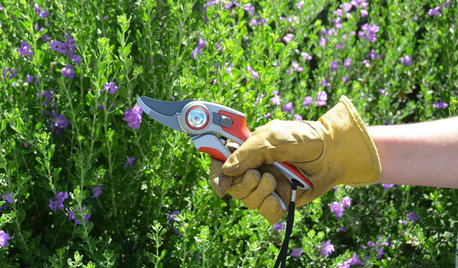
GARDENING 101Key Pruning Terms to Help You Shape Up Your Garden
Learn why heading back, crown raising and other practices are essential for your plants’ health and beauty
Full StorySponsored
Columbus Design-Build, Kitchen & Bath Remodeling, Historic Renovations



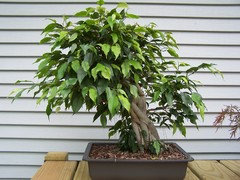
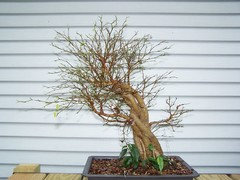
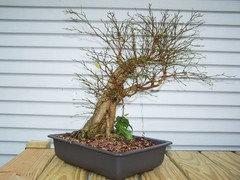
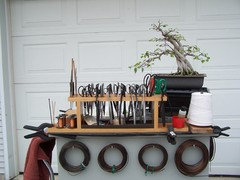
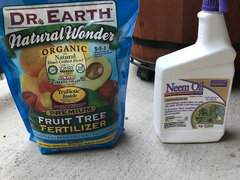
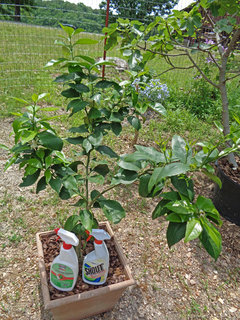

joeinmo 6b-7a